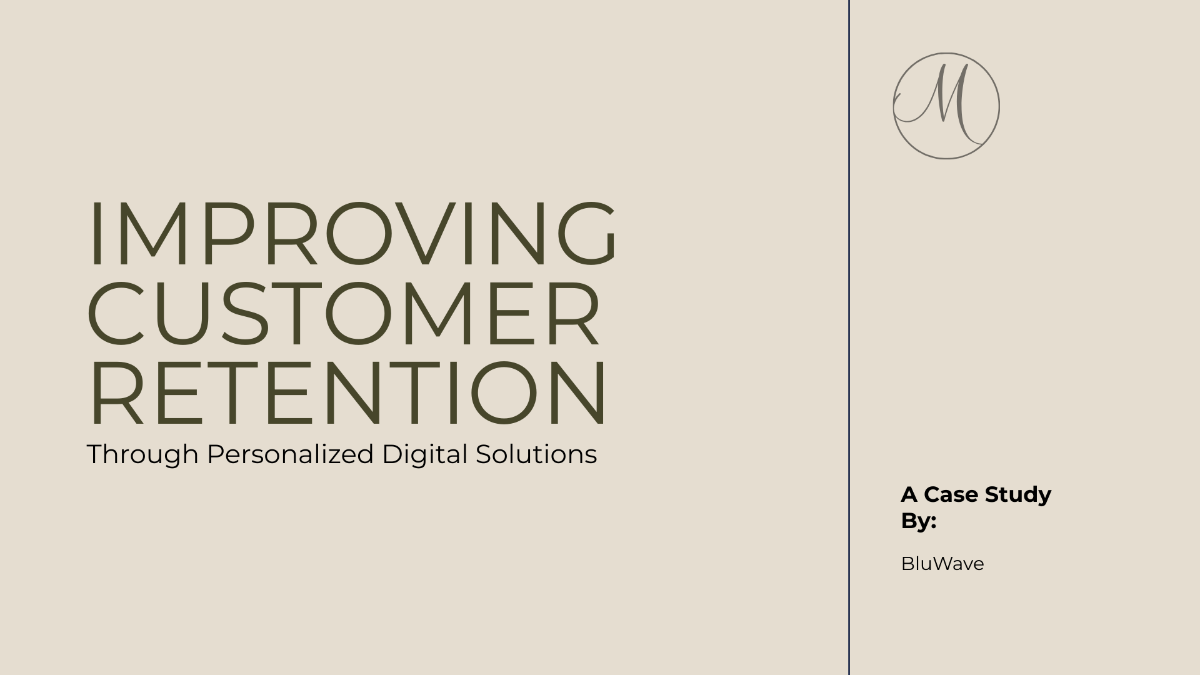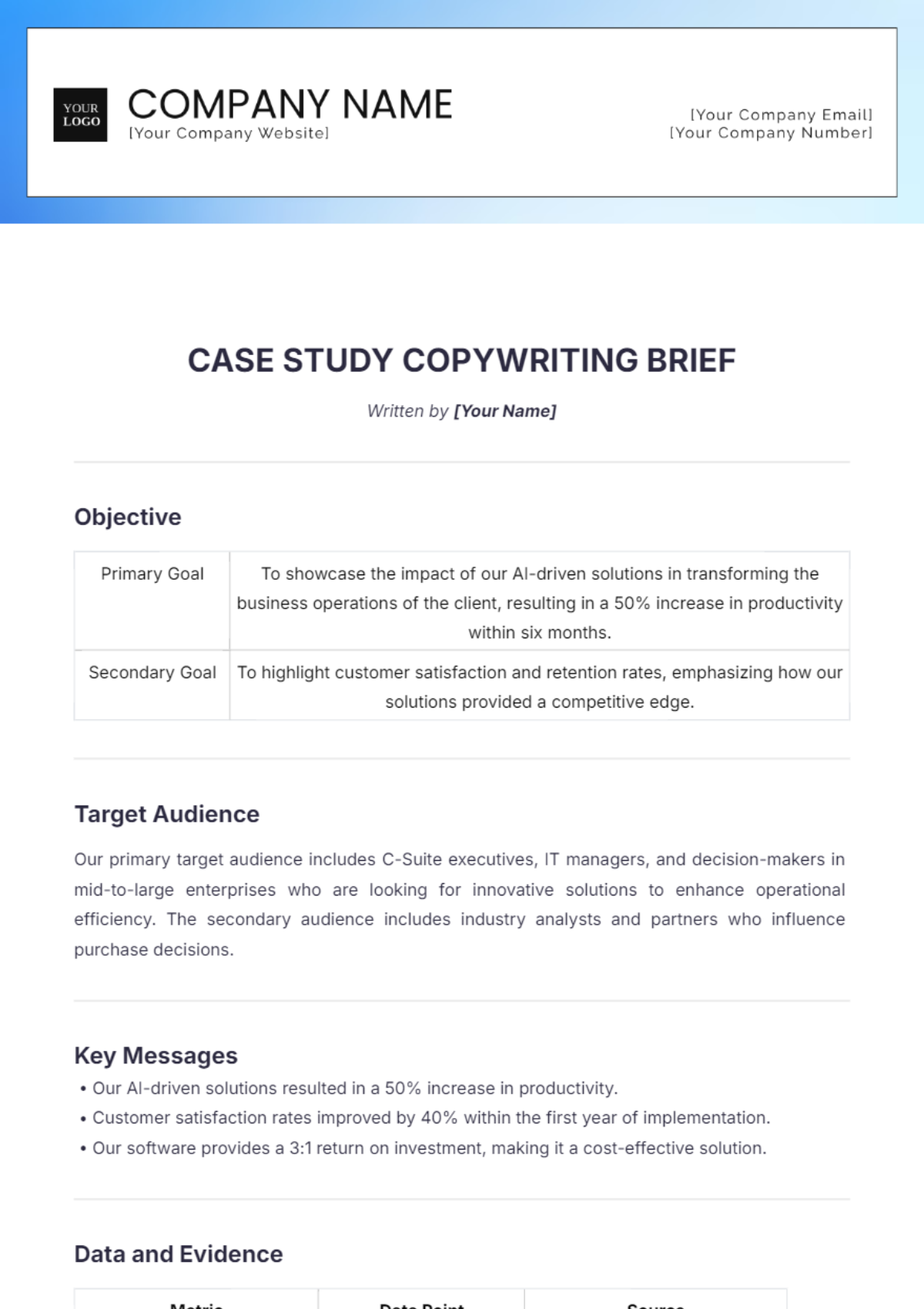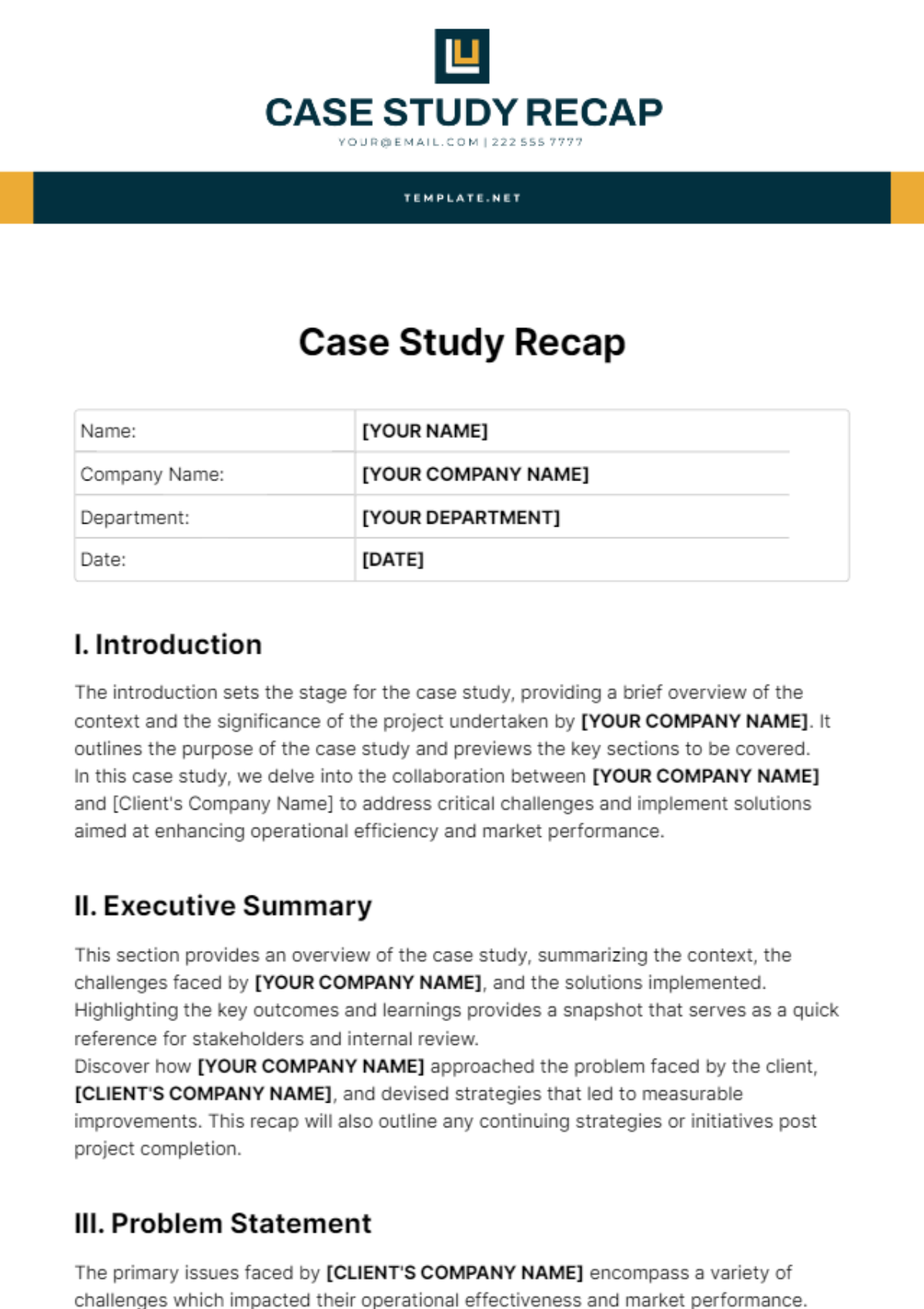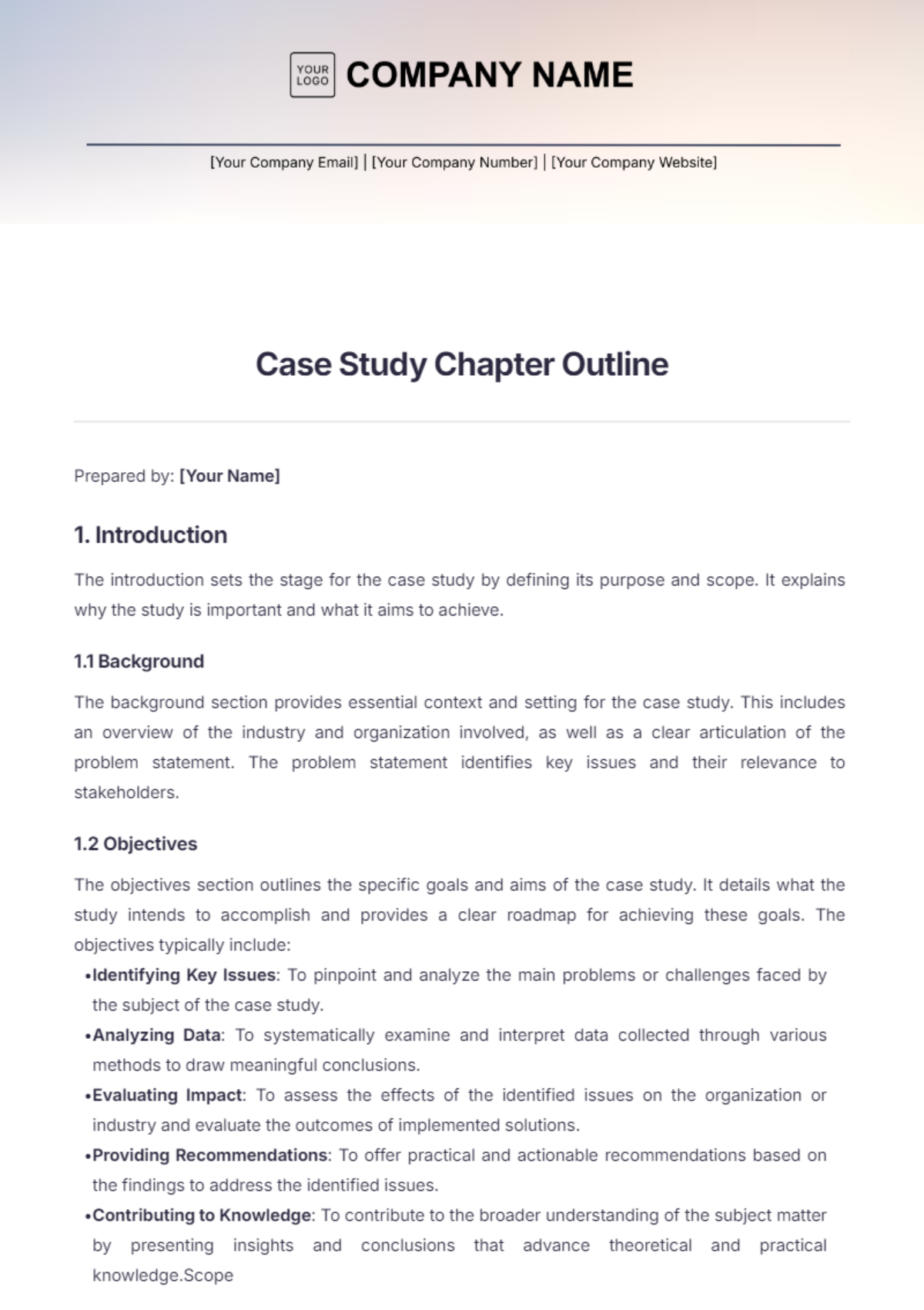Free Engineering Case Study Template
Engineering Case Study
I. Introduction
The [Your Company Name] team embarked on a groundbreaking project to design and implement a sustainable energy solution for a remote community. This case study delves into the [Your Department] Department's contributions and strategies in achieving exceptional outcomes.
II. Background Information
2.1 Project Overview
The project aimed to provide reliable and clean energy access to a remote community with limited infrastructure. The objectives included reducing reliance on fossil fuels, improving energy efficiency, and promoting environmental sustainability.
2.2 Industry Context
The renewable energy sector is witnessing rapid advancements in solar, wind, and hydroelectric technologies. Regulatory frameworks emphasizing clean energy adoption influenced decision-making, driving the team to explore innovative solutions.
III. Objectives
Deploy renewable energy: The necessities related to power for the community should be fulfilled. We can achieve this by forming a practical system that is rooted in the principles of renewable energy sources.
Reduce carbon footprint: Work towards minimizing greenhouse gas emissions through eco-friendly, economical, and sustainable energy practices for our planet's overall health.
Enhance energy access: The goal is to enhance and boost the reliability of energy supplies, along with making it more affordable for the population that is being targeted.
IV. Methodology
4.1 Approach
The team chose a phased, multifaceted strategy for their task. It involved multiple feasibility studies, technology selection, system planning, execution in real settings, and continuous monitoring to ensure smooth operation and swift irregularity correction.
4.2 Implementation
The project began with site evaluations for equipment installation suitability. Stakeholders' needs and concerns were then identified through discussions, leading to equipment procurement. Post-procurement marked the start of installation, followed by performance testing to verify equipment efficiency.
V. Results
5.1 Data Collection
The data was collected through diverse methods, including on-site monitoring, measuring energy output, and user feedback. This multifaceted approach, which involved firsthand observation, statistical assessment of energy production, and user experience, ensured the data's accuracy and relevance.
5.2 Key Findings
The renewable energy system's performance exceeded expectations, generating an average daily power of 150 kWh - 20% more than estimated. This resulted in a substantial 30 metric tons annual CO2 reduction, supporting green sustainability goals. Proving reliability under severe weather, the system also reduced downtime by 15% compared to traditional sources, ensuring uninterrupted energy for essential services.
VI. Analysis
6.1 Performance Evaluation
An evaluation was conducted on the performance of the system, where it was measured against established industry standards and the energy requirements of the community. This thorough examination served to spotlight where the system was operating at peak efficiency and pinpointed specific areas that could benefit from further optimization and improvement.
6.2 Lessons Learned
The key insights that were included in the report were a thorough understanding of not only the optimal configurations for the system but also the maintenance requirements needed for its smooth operation. Moreover, the document also provided detailed strategies for engagement with the community, further adding to its comprehensive nature.
VII. Conclusions
The conclusion of the case study offers valuable insights into how successful project delivery is achieved. Additionally, it provides a comprehensive exploration of the lessons learned throughout the project's implementation. There is also an in-depth analysis of the profound impact the project had on the community's energy landscape, presenting an overall broader view of the implications of such initiatives.
VIII. Recommendations
Scalability: Consider looking into potential opportunities available for duplicating the model in contexts that share a similar nature or characteristics.
Continuous Monitoring: Implement robust monitoring and maintenance protocols for long-term sustainability.
Community Engagement: Foster community involvement in energy management and future expansion plans.

















































